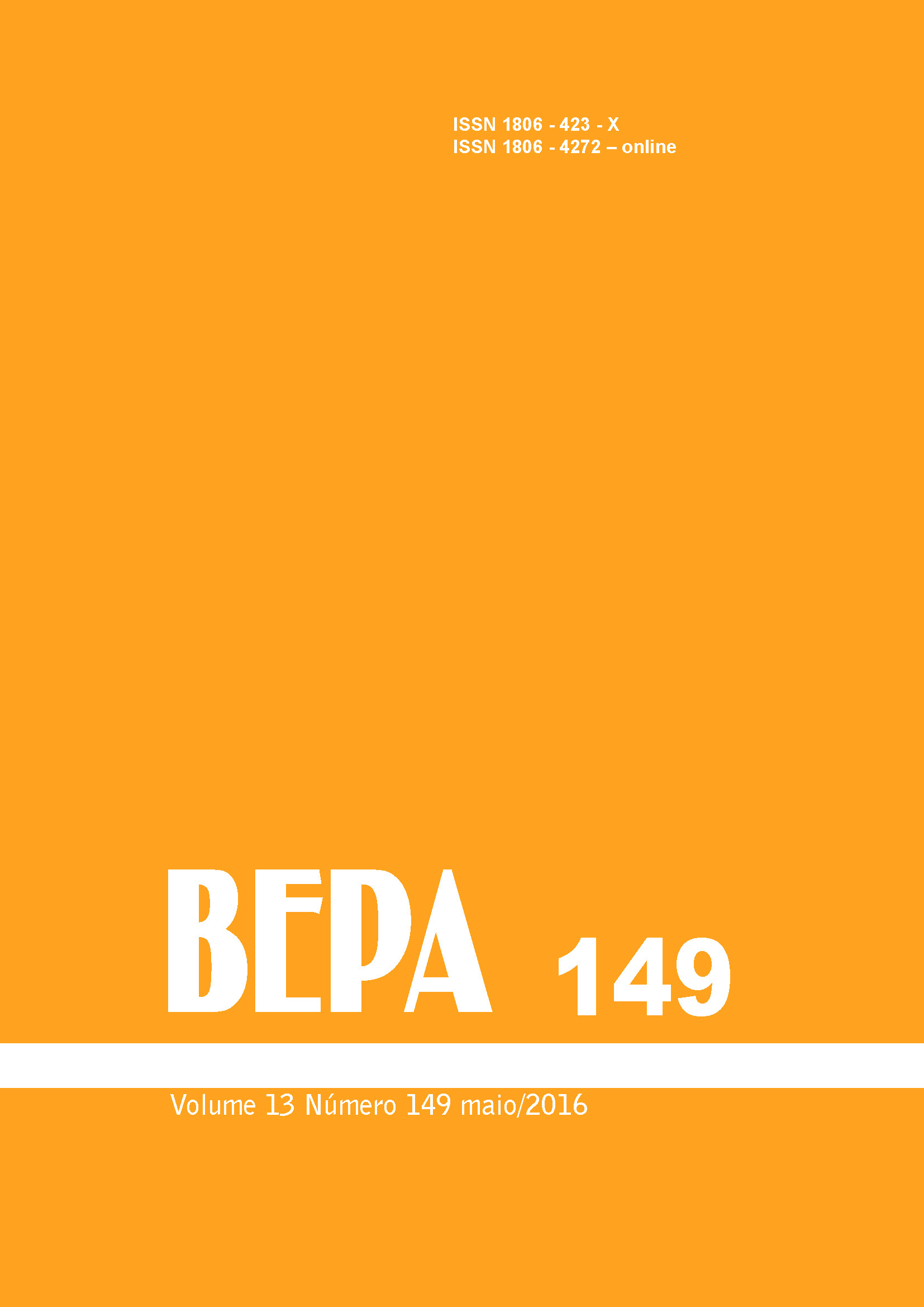Abstract
The paracoccidioidomycosis (PCM) is the greatest mycosis of chronic granulomatous nature in Brazil. The definitive diagnosis derives from the view of the etiologic agent, Paracoccidioides spp in biological samples. However, in some situations, access to the site of injury prevents the collection of biological material. Thus, immuno- serological techniques allow inferring diagnosis with a degree of certainty and optimizing time taken to get results. The serological technique widely used for immunodiagnosis of PCM is double immunodiffusion in agarose gel (DI), with a sensitivity and specificity ranging from 65 to 100%, being easy to perform and not requiring automation. The Dot-blot (DB) technique has been used successfully in the diagnosis of many infectious and parasitic diseases such as visceral leishmaniasis and toxoplasmosis. On the diagnosis of PCM, this methodology showed promise results in monitoring patients during treatment with anti-fungal and seroepidemiological surveys. Given the above, the objective of this study was to standardize the Dot-blot assay targeting the rapid diagnosis of PCM, suggesting that it is a screening tool for sera with clinical suspicion for the disease. The standardization of Dot- Blot showed better results when using antigen obtained from culture filtrate of P. brasiliensis isolated from B-339 to sensitize nitrocellulose membranes. The serum and conjugated dilutions were 1:40 and 1:2000, respectively, both incubating in PBS-3% L. For the standardization of the Dot-blot assay, 143 serum samples were used and called, control group. Of these, 23 samples were apparently healthy patients, 77 serum samples from patients with confirmed PCM and 43 serum samples with other diseases (tuberculosis and aspergillosis, histoplasmosis). The results enabled the calculation of sensitivity, specificity, positive and negative predictive values, and accuracy prevalence for both techniques in isolation, as follows: 98.2%, 75.5%, 72.7%, 98.4%, 40% and 84.6% for DI and 95.9%, 90%, 91%, 95.4%, 51% and 93% for DB, respectively. In addition to the control group, 300 serum samples from patients with clinical suspicion of PCM were used to evaluate the performance of the standard technique. The circulating antibodies anti-P. brasiliensis employing double immunodiffusion, revealed that 34% were reactive and 66 % no reactivite to P. brasiliensis. On the other hand, by Dot-blot methodology, it was observed the serum recognition of anti-P. brasiliensis in 47.3% and no reaction in 52.7%. Comparing the discriminatory ability of both methods, it can be suggested that the DB has a tendency to raise the reactivity pattern, as recognized 40 sera higher than the DI. When comparing the results of the two tests, considering the DI the gold standard, it showed co-positivity and co-negativity of 68.3% and 96.8%, respectively. And getting an index of agreement between them for κ=0.66, rated as good. The analysis of the stability of nitrocellulose membranes doted with the antigen of P. brasiliensis demonstrated that stored membranes blocked, regardless of the storage temperature showed no reactivity patterns as observed in membranes stored not blocked. Best results and reactivity patterns were seen in membrane fitted and stored at room temperature, up to 90 days. The intermediate repeatability also showed satisfactory results, since only three serum samples from 11 randomly selected for the study, were different among the four distinct analysts who performed the Dot-blot technique. The results obtained, demonstrate that the technique is easy to perform, less cost and time to its result, allowing us to suggest a new algorithm for the serological diagnosis of PCM, replacing the indiret ELISA methodology proposed for the realization of serological screening by Dot-blot assay.

This work is licensed under a Creative Commons Attribution 4.0 International License.
Copyright (c) 2016 Camila Mika Kamikawa, Adriana Pardini Vicentini (orientadora)
